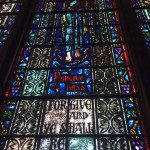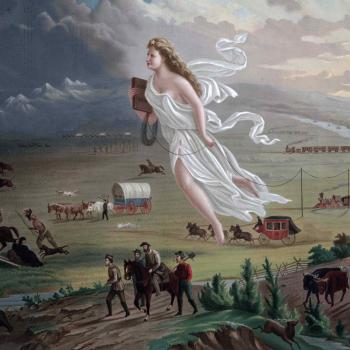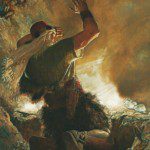Western Protestants are familiar with the idea of Christianity as a faith of the book, of the word written, read, and proclaimed. Historically, though, a great many Christians have learned their faith through other means, including the visual arts and especially music, and such non-literary forms are very common today in rising churches, in Africa and elsewhere.
To get a sense of how such instruction works, I return to the story I told last time, as Anglican cleric Erasmus Saunders described the state of religion in south and west Wales around the year 1715, when Catholic structures had been uprooted, while new Protestant/Anglican forms had made little impression. Bibles were all but unobtainable, and lack of education made literacy a scarce commodity. People loved religion and had an avid taste for it, but had few means to learn or express it except for methods they devised themselves.
Saunders offers a moving portrait of what these upland villagers did in such circumstances, and entirely independently of clerical authority:
To make their private instructions more agreeable and effectual, as they are naturally addicted to poetry, so some of the more skilful and knowing among them frequently compose a kind of Divine hymns or songs, which they call Halsingod or Carolion, which generally consist either of the doctrinal or historical parts of Scripture, or of the lives and worthy acts of some eminent saints, whose extraordinary piety and virtue they thereby endeavour to illustrate, and recommend to themselves and others.
It is not to be expressed what a particular delight and pleasure the young people take to get these hymns by heart, and to sing them with a great deal of emulation of excelling each other. And this is a religious exercise they are used to, as well at home in their own houses as upon some public occasions ; such as at their wakes, and solemn festivals, and funerals, and very frequently in their churches in the winter season, between All Saints [November 1] and Candlemas [February 2], at which times, before and after Divine service upon Sundays or Holy Days, eight or ten will divide themselves to four or five of a side, and so forming themselves, as it were, into an imitation of our cathedral or collegiate choirs, one party first begins, and then, by way of alternate responses, the other repeats the same stanza, and so proceed till they have finished their Halsing, and then conclude with a chorus. …
It is happy for many in these parts that this good old custom is not yet forgotten, not only because it is a means to keep out a great deal of loose and vicious poetry, but because it renders the instructions, of which these hymns consist, the easier to be learned, and makes the impressions of them much more lasting than otherwise they would be.
We could almost be dealing with a late medieval confraternity, which is where the custom might have originated. Many of the actual carols and halsingod, though, are much later.
Few texts better suggest the power of music in building and maintaining community in a religious context, and in offering basic instruction. Such a story resonates wonderfully well in contemporary Global South churches.

















